Are you interested in knowing the most popular bonsai trees? This guide will show you the top picks, each with its own charm and care tips.
You’ll discover what the miniature version trees need to grow, where they thrive best, and why people love them. Whether you’ve been into bonsai for a while or are just starting, there’s something for you.
Excited to find out which bonsai could be the star of your collection? Let’s check out popular bonsai trees and see which one fits perfectly in your home or garden.
- Related article: How to Grow Bonsai
Most Popular Bonsai Trees
When it comes to popular bonsai trees, several species stand out for their unique features and care requirements. Whether you’re a beginner or an experienced enthusiast, these trees bring beauty and character to any collection.
Let’s explore some of the most popular bonsai trees that are loved for their resilience, aesthetic appeal, and manageable care routines.
1. Cedar Bonsai Tree (Cedrus)
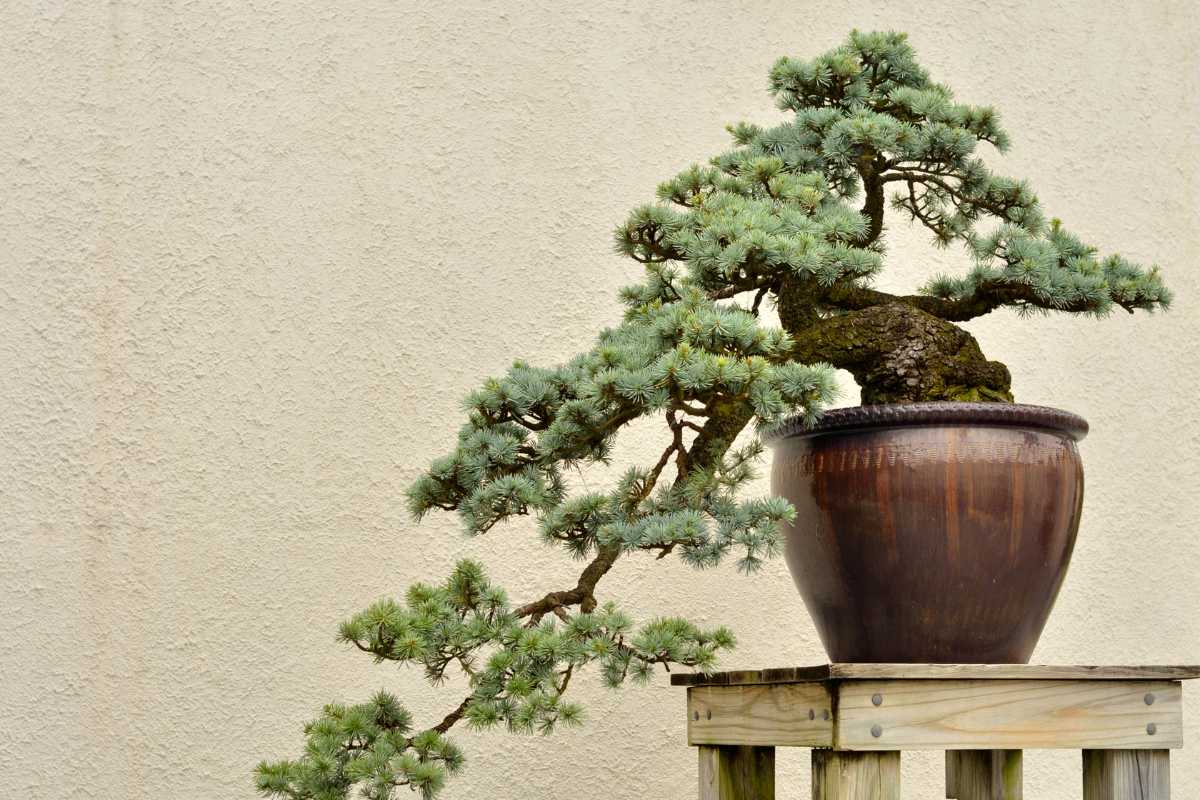
Cedar Bonsai trees really stand out in any collection. You’ve got great evergreen tree species options to grow like the Atlas Cedar, Cyprus Cedar, Himalayan Cedar, and Lebanon Cedar. Each one has its own special look with cool bark and tiny needle clusters.
Cedar Bonsai does best in a slightly dry soil bed and loves soaking up about six hours of direct sunlight each day. A big tip is to steer clear of overwatering because these trees don’t like too much moisture.
You should also, keep them safe from cold and strong winds, especially when they’re young. They take a while to heal from pruning, but with careful wiring, they do respond well.
| Soil Type | Well-drained, acidic |
| Light | Full sun |
| Hardiness Zone | 6-9 |
| Trunk Characteristics | Rough, textured bark, straight or slightly curved |
| Leaf Characteristics | Needle-like, evergreen, small, dark green |
| Flower Color | No flowers |
| Growing Season | Spring to Summer |
2. Chinese Elm Bonsai Tree (Ulmus parvifolia)
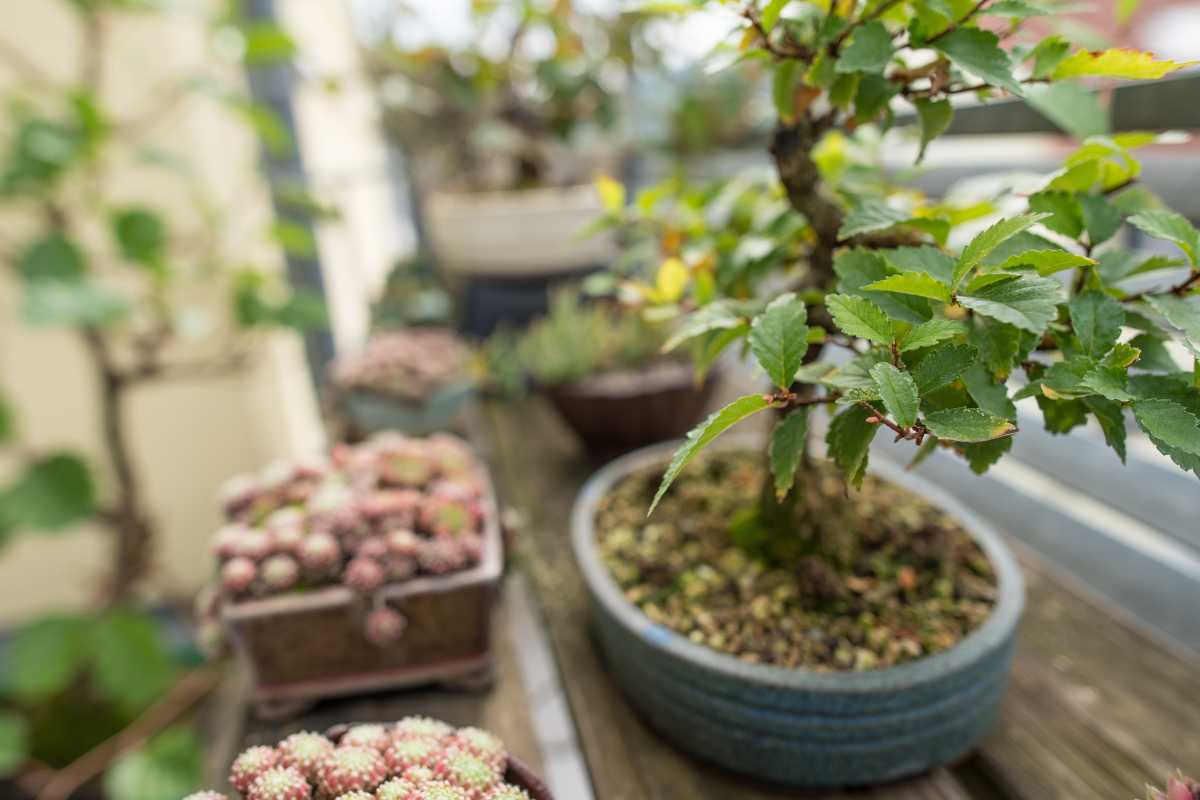
The Chinese Elm Bonsai is a go-to choice for many, especially if you’re new to bonsai. This spectacular bonsai tree changes its leaves’ color and stays small, giving your collection a lively touch. It’s also tough against too much water and grows fast, making it perfect for beginners.
You can grow this tree in both full sun and partial shade, but it loves to be indoors during the cold months. You’ll need to trim it often because it grows quickly, and wiring helps shape it just right. Its strength and flexibility make it a favorite among bonsai lovers, no matter how long they’ve been in the hobby.
| Soil Type | Well-drained, loamy |
| Light | Full sun to partial shade |
| Hardiness Zone | 5-9 |
| Trunk Characteristics | Smooth gray bark that becomes rough with age |
| Leaf Characteristics | Small, oval-shaped, serrated edges, dark green |
| Flower Color | No flowers |
| Growing Season | Spring to Fall |
3. Dwarf Jade Bonsai Tree (Portulacaria afra)
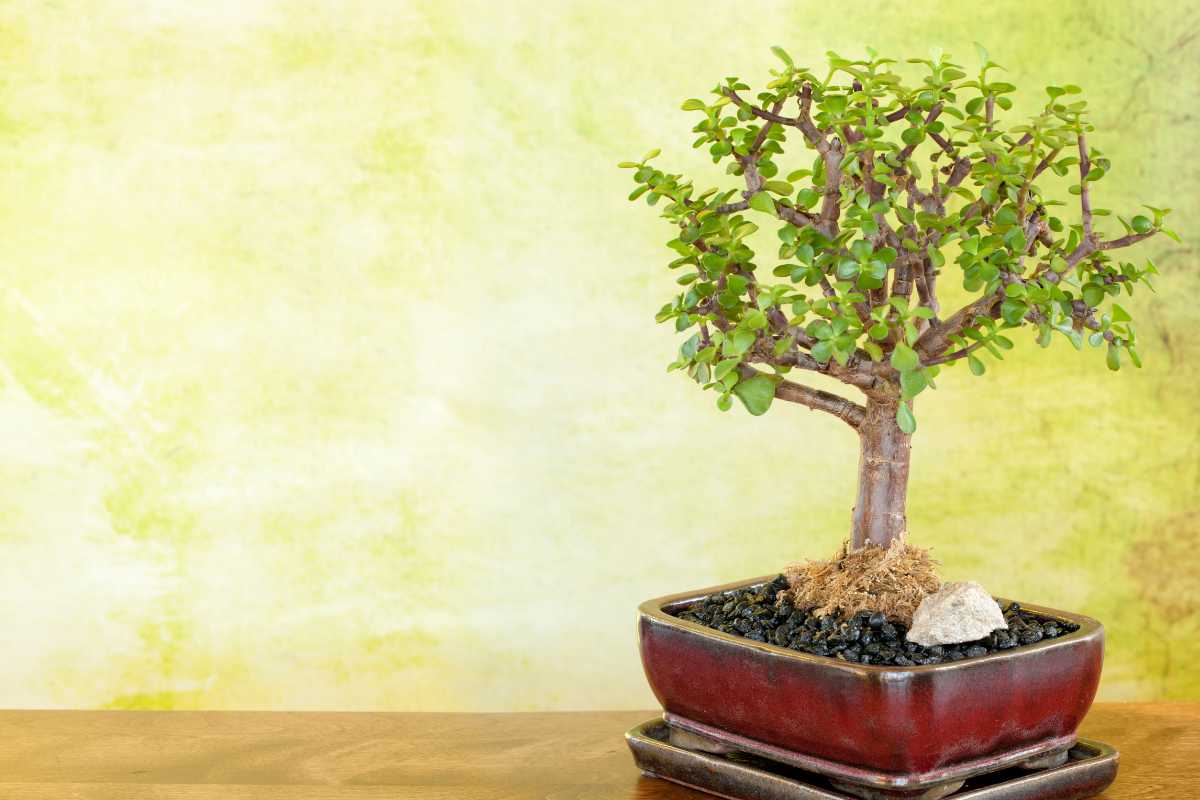
Many people also love the Dwarf Jade Bonsai. This bonsai tree has soft leaves and a sturdy trunk making it stand out. This type of tree is different from the usual jade plant because it has smaller, and more compact-looking leaves.
If you’re in a sunny area, you can grow it outside. You can also keep it inside where it’s nice and temperate. The important part is giving it lots of sunlight and not too much water.
Sometimes, the branches hold a lot of water, so prune it regularly to keep it healthy. Be gentle when you’re wiring it because the trunks are soft and can break easily.
| Soil Type | Well-drained, sandy |
| Light | Bright, indirect light |
| Hardiness Zone | 10-11 |
| Trunk Characteristics | Thick trunk, gray-green bark |
| Leaf Characteristics | Small, round, succulent-like, glossy green |
| Flower Color | Small white or pink flowers |
| Growing Season | Spring to Fall |
4. Fukien Tea Bonsai Tree (Carmona retusa)
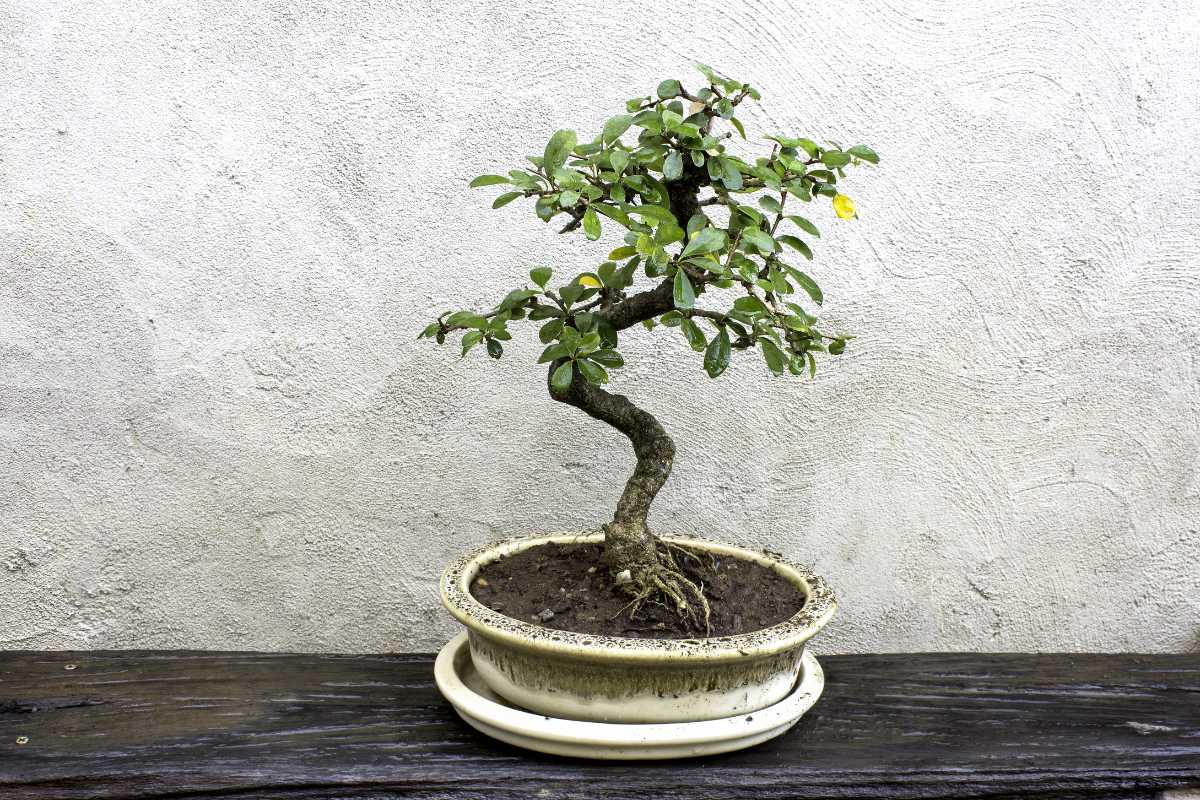
The Fukien Tea Bonsai is also considered a favorite tree to grow as a bonsai by many gardeners. Its dense, glossy leaves and small white flowers make it visually stunning.
Keep it near a sunny window because it thrives on lots of light and a moist soil bed. It responds well to regular pruning, which helps it develop a fuller, denser look.
This beauty produces tiny berries year-round. If you’re considering growing it outdoors, make sure you have a warm climate.
| Soil Type | Well-drained, slightly acidic |
| Light | Bright, indirect light |
| Hardiness Zone | 10-11 |
| Trunk Characteristics | Twisting, gnarled trunk, light brown bark |
| Leaf Characteristics | Small, glossy dark green leaves, oval in shape |
| Flower Color | Small white flowers |
| Growing Season | Spring to Fall |
5. Ginseng Ficus Bonsai Tree (Ficus retusa)
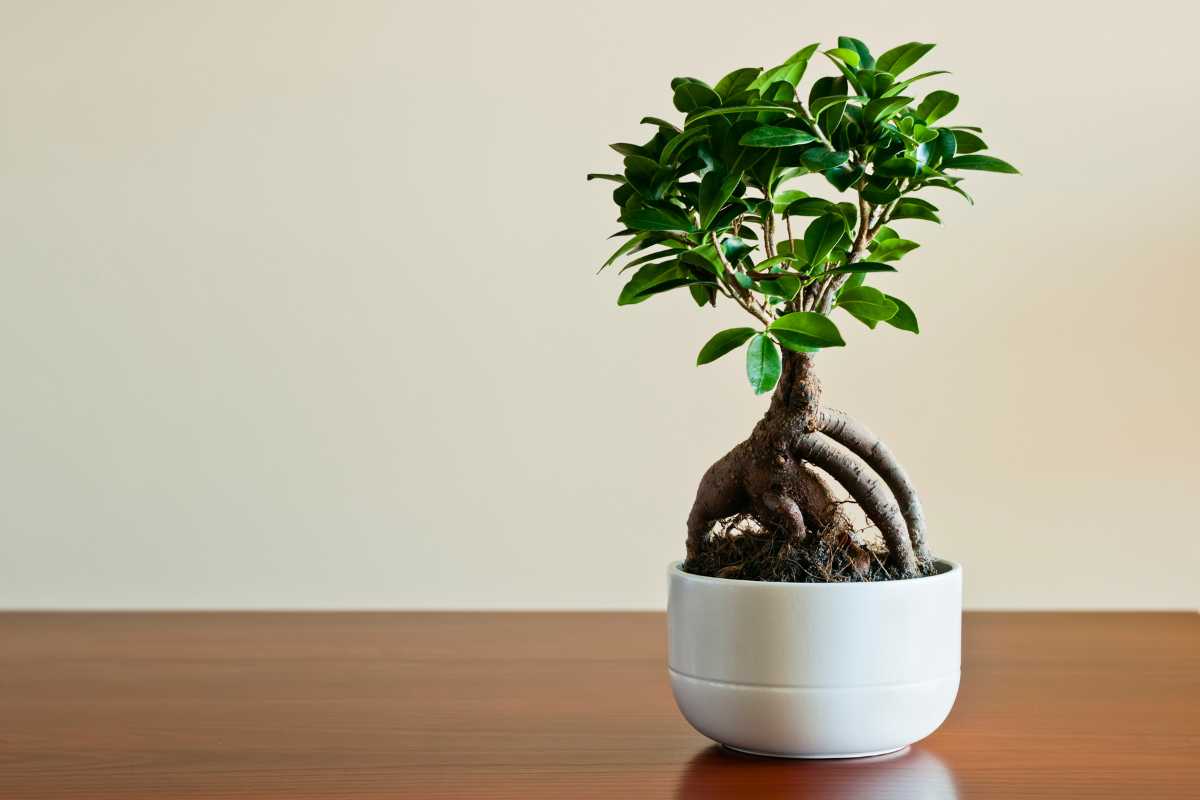
The Ginseng Ficus has been a standout for many bonsai collections due to its distinctive pot-bellied trunk and thick, waxy leaves. It’s a fantastic indoor bonsai because it’s so easy to care for.
If you want to grow one make sure that it receives full sunlight and maintains consistent temperatures to keep it healthy. It’s adaptable to various humidity levels, which is great if you have fluctuating indoor conditions. The Ginseng Ficus is also quite flexible with wiring, making it a versatile choice for different bonsai styles.
| Soil Type | Well-drained, loamy |
| Light | Bright, indirect light |
| Hardiness Zone | 9-11 |
| Trunk Characteristics | Thick, bulbous root trunk, smooth light gray bark |
| Leaf Characteristics | Oval-shaped, glossy green leaves |
| Flower Color | No flowers |
| Growing Season | Year-round |
6. Japanese Flowering Cherry Bonsai Tree (Prunus serrulata)
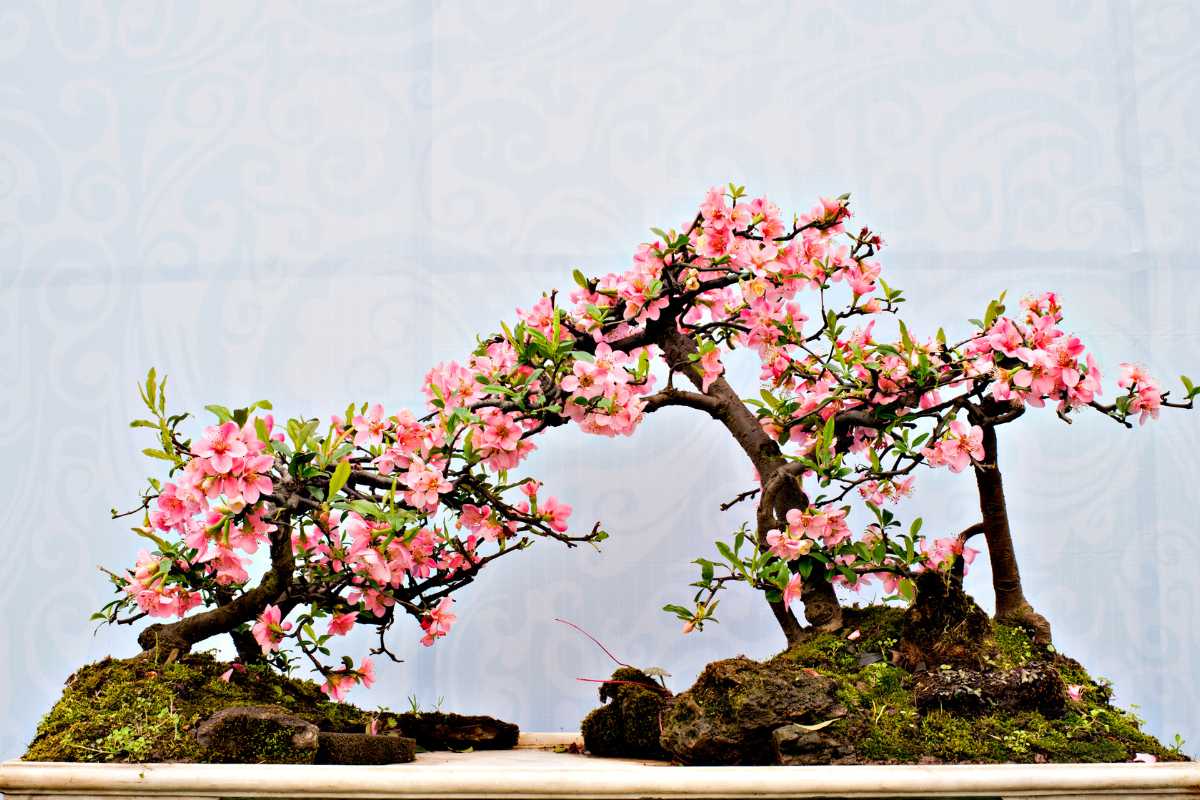
The Japanese Flowering Cherry Bonsai is another favorite due to its appearance, especially during its blooming season. The delicate pink flowers and fine leaves create a beautiful display. It does well with indirect light rather than full sun, which helps preserve its delicate blossoms.
If you are growing one, make sure to keep it in a consistently humid environment and provide a dormancy period in winter. This tree’s low maintenance and stunning flowers make it a beloved addition to any bonsai collection.
| Soil Type | Well-drained, slightly acidic |
| Light | Full sun |
| Hardiness Zone | 5-8 |
| Trunk Characteristics | Dark brown to black bark, smooth with horizontal lenticels |
| Leaf Characteristics | Small, serrated, oval-shaped, green leaves |
| Flower Color | Pink or white flowers |
| Growing Season | Spring |
7. Japanese Maple Tree (Acer palmatum)
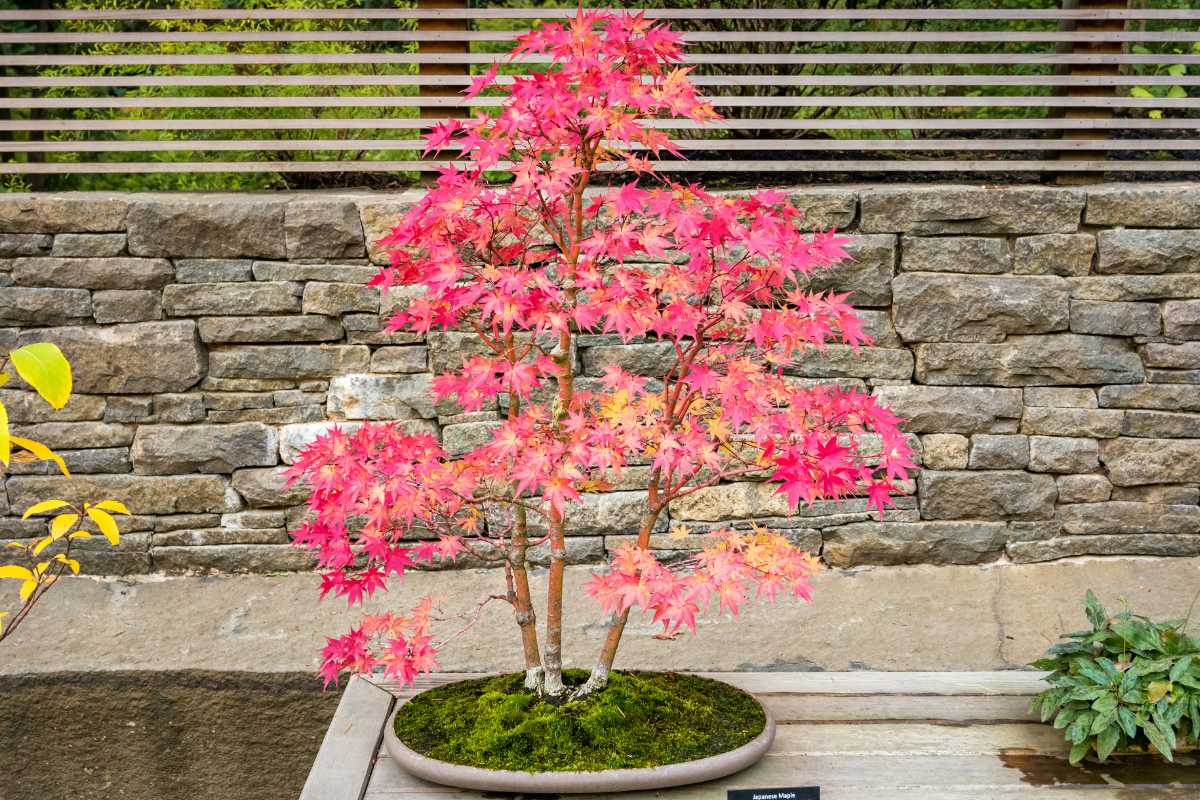
The vibrant red and green Japanese Maple leaves transform into shades of orange, yellow, and red in the fall. This deciduous tree is relatively easy to care for, preferring partial shade and regular watering.
You can grow this bonsai tree both indoors and outdoors, but it’s important to protect it from frost and cold weather if grown outside. The flexible branches make it easy to shape with wiring, and its moderate growth rate means you won’t be constantly pruning.
| Soil Type | Well-drained, slightly acidic |
| Light | Full sun to partial shade |
| Hardiness Zone | 5-8 |
| Trunk Characteristics | Thin, elegant trunk with smooth bark |
| Leaf Characteristics | Palmate leaves, lobed, green to red in color, medium-sized |
| Flower Color | No flowers |
| Growing Season | Spring to Fall |
8. Juniper Tree (Juniperus)
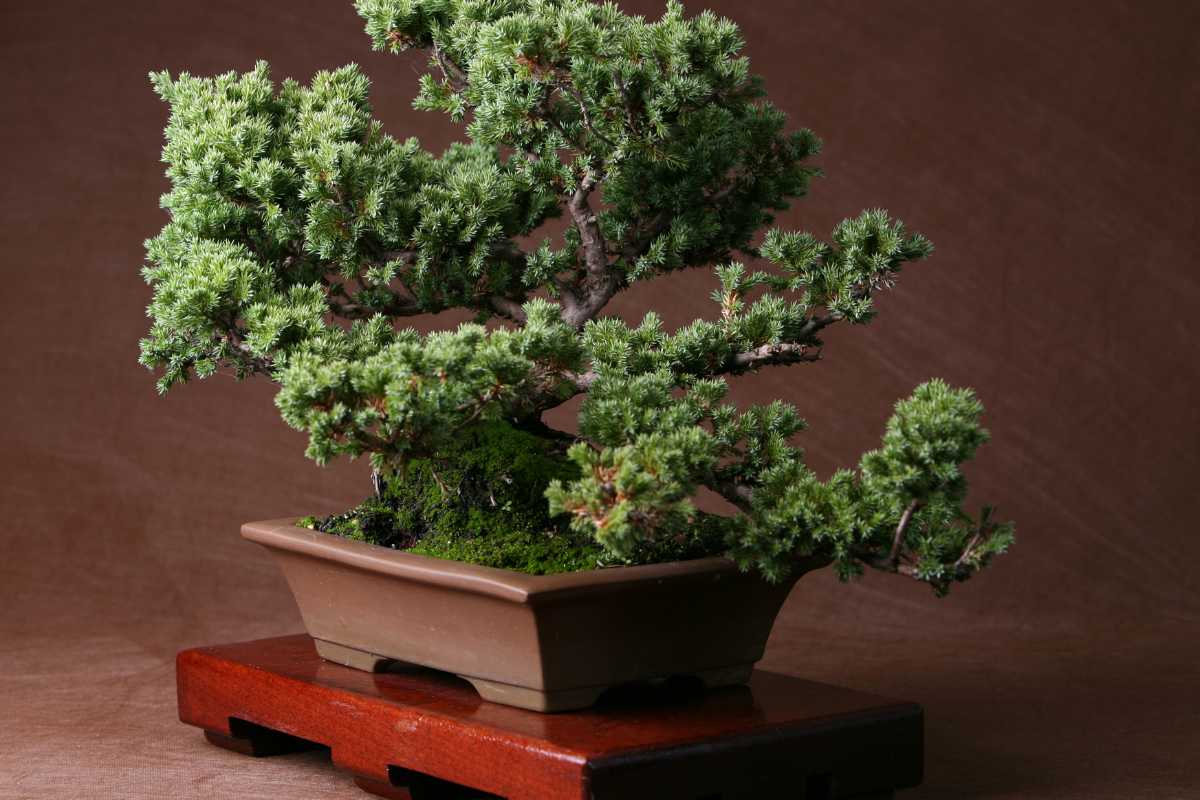
Juniper Bonsai trees have become a staple for many due to their rugged nature and classic appearance. They thrive in bright sunlight and need a well-drained soil bed that dries out between waterings.
This tree also needs some protection during winter months because of its low cold tolerance, but the tree’s foliage rebounds beautifully come spring. The Juniper is excellent for training and wiring, and its natural twisted shape adds to its charm.
| Soil Type | Well-drained, slightly acidic |
| Light | Full sun |
| Hardiness Zone | 4-9 |
| Trunk Characteristics | Thick, rugged trunk with reddish-brown bark |
| Leaf Characteristics | Needle-like, small, sharp, dark green leaves |
| Flower Color | No flowers |
| Growing Season | Spring to Summer |
- Read more: Care Tips for Juniper Bonsai
9. Pine Tree (Pinus)
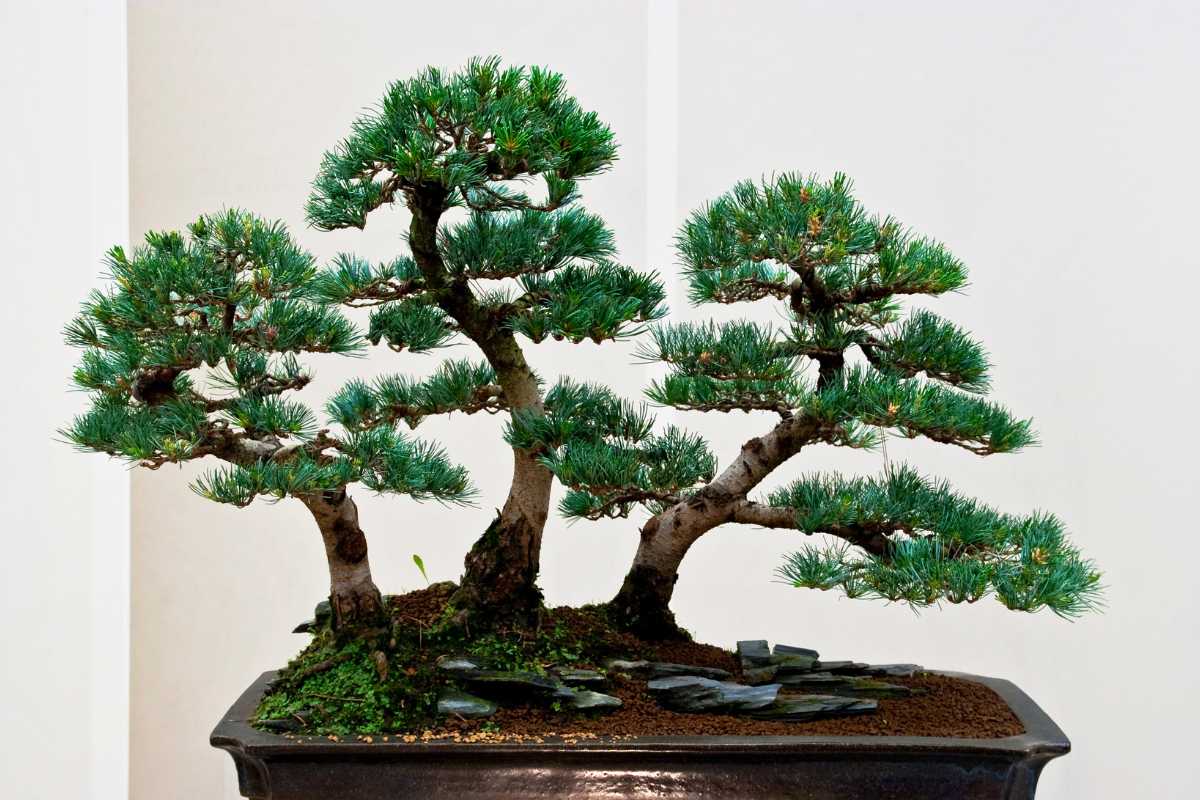
Pine Bonsai trees are well regarded for their resilience and classic evergreen beauty. They’re popular for their ability to endure tough conditions and adapt well to various shapes.
Pines thrive in a well-drained soil mix and need protection from extreme cold. Watering it often is important, but the soil should dry out between sessions. Personally, I like them for their strong nature and how easy they are to shape. They’re a great, lasting part of my bonsai collection.
| Soil Type | Well-drained, slightly acidic |
| Light | Full sun |
| Hardiness Zone | 3-8 |
| Trunk Characteristics | Rough, scaly bark, straight and strong |
| Leaf Characteristics | Needle-like, dark green, long clusters |
| Flower Color | No flowers |
| Growing Season | Spring to Fall |
- Read more about the Norfolk Island Pine Tree
10. Weeping Fig Tree (Ficus benjamina)
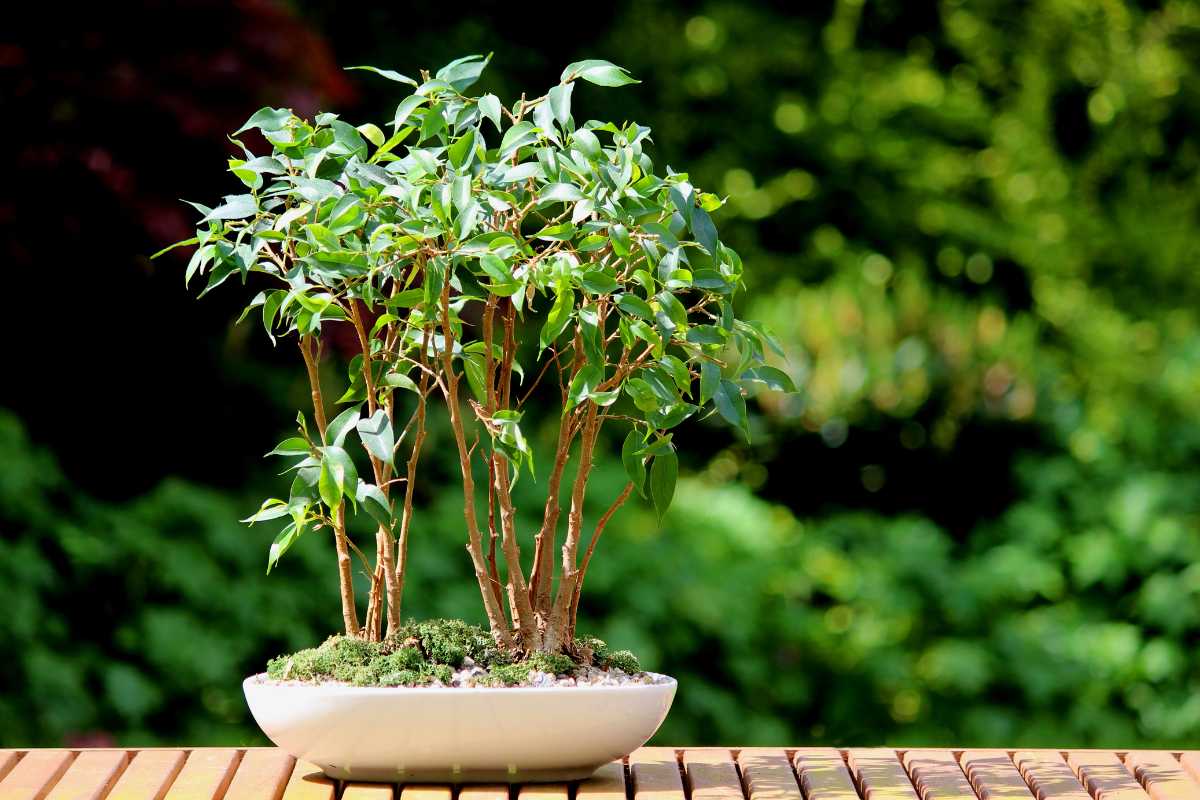
The Weeping Fig Bonsai is known for its graceful, cascading branches and dense foliage. Its unique appearance makes it a popular choice for indoor bonsai enthusiasts.
They thrive in bright, indirect light and they need plenty of water. Regular pruning helps manage its rapid growth and maintain its shape. Its elegant form and adaptability to indoor conditions make it a standout feature in my bonsai garden.
| Soil Type | Well-drained, loamy |
| Light | Bright, indirect light |
| Hardiness Zone | 10-12 |
| Trunk Characteristics | Light gray bark, flexible, can be braided |
| Leaf Characteristics | Small, glossy, dark green leaves, oval-shaped |
| Flower Color | No flowers |
| Growing Season | Spring to Fall |
Learn more about the Weeping Fig Tree
11. Bougainvillea Bonsai Tree (Bougainvillea spp.)
Bougainvillea is one of the many beautiful bonsai trees that stands out with its bright, colorful bracts and strong growth. People who love bonsai really like how this colorful tree blooms a lot.
If you’re growing one, put it where it’s sunny and water it regularly. Pruning is important to keep its fast growth in check and to make the flowers even more beautiful. Many enjoy the bright colors and the challenge of shaping them, which makes my bonsai collection more vibrant.
| Soil Type | Well-drained, slightly acidic |
| Light | Full sun |
| Hardiness Zone | 9-11 |
| Trunk Characteristics | Twisted, thorny trunk, brown bark |
| Leaf Characteristics | Small, oval, bright green leaves |
| Flower Color | Magenta, purple, red, or pink flowers |
| Growing Season | Spring to Fall |
12. Boxwood Bonsai Tree (Buxus spp.)
Boxwood Bonsai trees are loved for their thick, green leaves and great shape. They grow compact and can handle a lot of cutting, making them perfect for detailed designs.
This is one of the bonsai that you can grow and I keep in a spot with some shade. Cut it back often to keep its look. It’s really flexible and always looks neat and tidy, which is why it’s a top pick in my bonsai collection.
| Soil Type | Well-drained, slightly acidic |
| Light | Full sun |
| Hardiness Zone | 5-8 |
| Trunk Characteristics | Thick, rugged, dark brown bark |
| Leaf Characteristics | Long, dark green needles, grow in pairs |
| Flower Color | No flowers |
| Growing Season | Spring to Fall |
13. Olive Tree Bonsai (Olea europaea)
Olive Bonsai trees are valued for their gnarled trunks and silvery-green leaves, adding a Mediterranean flair to any collection. They’re popular due to their hardy nature and ability to thrive in warm, sunny conditions.
They also need well-drained soil and a lot of sunlight to flourish. Their distinctive trunk and resilient growth make them a unique and cherished part of any bonsai setup.
| Soil Type | Well-drained, slightly acidic |
| Light | Bright, indirect light |
| Hardiness Zone | 10-11 |
| Trunk Characteristics | Thin, smooth bark, peeling brown patches |
| Leaf Characteristics | Small, oval, glossy green leaves |
| Flower Color | Small white flowers |
| Growing Season | Spring to Fall |
14. Cotoneaster Bonsai Tree (Cotoneaster horizontalis)
The Cotoneaster Bonsai stands out with its small, shiny leaves and vibrant red berries. You will love how this tough plant thrives even in cooler weather, making it a top choice for those who enjoy bonsai outdoors.
Its charm lies in the tiny white flowers that appear in spring, followed by the eye-catching red berries in the fall. This feature ensures the Cotoneaster Bonsai remains attractive throughout the year.
| Soil Type | Well-drained, loamy |
| Light | Full sun |
| Hardiness Zone | 5-7 |
| Trunk Characteristics | Smooth, thin bark, reddish-brown |
| Leaf Characteristics | Small, dark green leaves, oval-shaped |
| Flower Color | White or pink flowers |
| Growing Season | Spring to Fall |
15. Shimpaku Juniper Bonsai Tree (Juniperus chinensis ‘Shimpaku’)
The Shimpaku Juniper is known for its thick leaves and its trunk, which twists and looks tough. Since it grows slowly, it’s perfect for those who want to spend a long time shaping their bonsai. The Shimpaku Juniper has tiny leaves that look neat and classy. You can also shape its trunk to look like it’s part of a natural scene.
If you’re into bonsai, the Shimpaku Juniper offers a rewarding challenge and a chance to create something truly unique.
| Soil Type | Well-drained, slightly acidic |
| Light | Full sun |
| Hardiness Zone | 4-9 |
| Trunk Characteristics | Twisted, gnarled trunk, reddish-brown bark |
| Leaf Characteristics | Scale-like, dark green foliage |
| Flower Color | No flowers |
| Growing Season | Spring to Summer |
16. Ficus Microcarpa Bonsai Tree (Ficus microcarpa)
The Ficus Microcarpa stands out as a beloved choice for indoor bonsai enthusiasts. You’ll appreciate its thick, aerial roots and shiny green leaves. This tree is not just about looks; it’s also a breeze to care for.
Their roots wrap around the trunk, giving the tree a unique and sturdy appearance. This feature adds a lot of character and makes each tree special.
If you’re looking for a bonsai that’s easy to manage and has a unique look, the Ficus Microcarpa is an excellent choice.
| Soil Type | Well-drained, loamy |
| Light | Bright, indirect light |
| Hardiness Zone | 9-11 |
| Trunk Characteristics | Thick, gnarled roots, smooth gray bark |
| Leaf Characteristics | Oval, glossy dark green leaves |
| Flower Color | No flowers |
| Growing Season | Year-round |
17. Azalea Bonsai Tree (Rhododendron spp.)
Azalea Bonsai trees are a favorite for many including myself because of their beautiful, bright flowers that bloom all over the tree in spring. You can find flowers in pink, red, and white, which makes this bonsai tree a highlight in any garden.
| Soil Type | Acidic, well-drained |
| Light | Partial shade to full sun |
| Hardiness Zone | 6-8 |
| Trunk Characteristics | Short, twisted trunk with rough bark |
| Leaf Characteristics | Small, dark green leaves, oval-shaped |
| Flower Color | Pink, white, red, or purple flowers |
| Growing Season | Spring to Summer |
Popular Bonsai Trees Final Thoughts
The sheer beauty of bonsai trees with stylish artistic designs makes them a beautiful addition to any location and they make lovely gifts.
While nearly any perennial tree can be cultivated and trained as a bonsai tree, some tree species are more popular for aesthetic considerations and others for low-maintenance care.
Often described as living sculptures, bonsai trees have been found through research to contribute to relaxation and a positive attitude in people with debilitating health conditions.
Learn more about the bonsai type of plant with these other articles:












